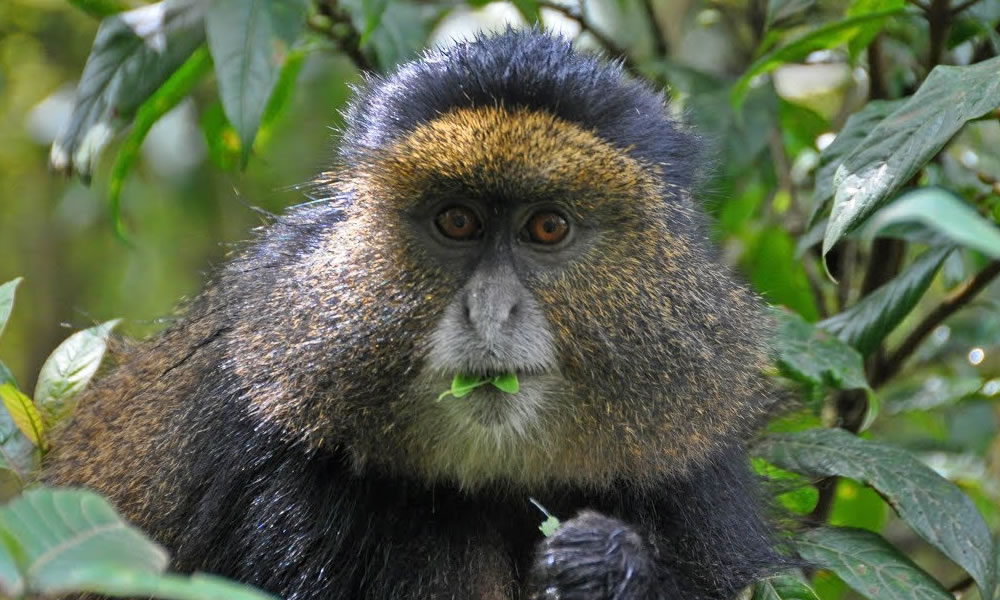Gishwati Mukura National Park is Rwanda’s newest conservation area. It was derived from the 2 forests of Gishwati and Mukura. It is the 4th national park of Rwanda forming a total area space of approximately 34 square kilometers, the larger forest is the Gishwati and the smaller Mukura, many primates of Rwanda call this home, the forest straddles the ridges of the Congo Nile basin. It is a water catchment area for many of the neighbors living around the national park. The bio-diverse environment boasts tree species of the great Albertine Rift Valley region and birds some of which are endemic to the destination. The park was created as a result of merging the 2 forests that were strategized between the Akagera National Park buffer zone.

The national park is home to mostly primates there is a group of chimpanzees living in the national park, alongside other primates like the L’hoest monkeys, golden monkeys, and black and white colobus monkeys, mammals present in the park besides primates are within the forest although they are very shy and rare to see for example the bushbucks, several cats, tree hyraxes, the national park was opened in 2015 by the effort of the Rwandan government as a way for protecting the chimpanzee, these have been scientifically proven to share up to 98% of the human DNA characterized by their social behavior these have been given a leeway to cross over to the ecosystem through the buffer zone. The national park presents quite a number when it comes to birding in the national park, Examples of species to be sighted here include the regal sunbirds, blue turaco, Rwenzori batis, purple-breasted sunbirds, grey grey-crowned cranes to mention a few.
Gishwati Forest National Park was part of the Nyungwe Forest National Park, despite its popularity, the park is mostly shadowed by the other 3 in that it is so easy to miss out while on safari, despite the encroachment the government of Rwanda has played a key role in ensuring the remaining few places are safe and can be accessed by travelers the size of the forest with effort has increased, both of the forests have been recognized and set aside as buffer zones, things to do while in the national park include primate watching, the numbers have increased of late and an ideal location to see the golden monkeys, chimpanzee, L’hoest monkey, chimpanzee tracking begins at the park head offices with an early morning briefing.
Birding in the national park it is one of the best places to go birding over 83 species have been recorded here to date, some of which are endemics of the great Albertine Rift Valley region. Example species include sunbirds, wood hoops, strange weavers, purple breasted sunbirds, birding is done through the well-distributed trails of the national park, cultural encounters with the communities around the national park, local individual visits to the local homesteads, they will perform their traditional beautiful music and drumming.
